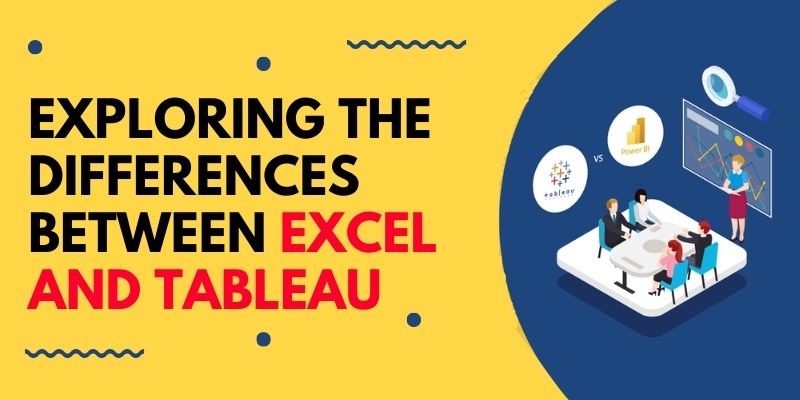Microsoft Excel is a spreadsheet program that may perform computations, statistical operations, data analysis, and reporting. Tableau is a business intelligence and data visualization application that may be used to get insights from data, uncover hidden trends, and make business choices. Learn how to create technical solutions, create data storage tools, and conduct tests with Tableau Training in Chennai and take your learning journey to the next level and become a Tableau Developer.
Tableau and Excel are powerful tools for creating, developing, storing, and analyzing data. Companies use both, although they have different features and functions. In this article, we’ll look at some Exploring the Differences Between Excel and Tableau.
What is Tableau?
Tableau is a Business Intelligence(BI) platform that allows anybody to quickly connect, visualize, and create interactive and shareable dashboards. Tableau visualizes data from the beginning, allowing you to recognize the relevance almost immediately. It distinguishes relationships through the use of color, size, labels, and shapes, providing context as you go down and explore on a granular level.
Advantages of Tableau
- Tableau Dashboard includes an excellent reporting function that allows you to customize the dashboard. This is only applicable to a mobile phone or laptop device.
- For sophisticated table calculations, Tableau users can include Python or R scripts.
- Tableau can easily manage massive amounts of data.
What is Excel?
Microsoft Excel is a spreadsheet that stores data in rows and columns. Cells are typically used to store information. To make it more appealing, you can add charts, tables, pictures, and additional visualizations as needed.
Advantages of Excel
Microsoft Excel can analyse massive amounts of data to identify trends and patterns that may be utilized to make better decisions.
Excel can easily perform the majority of mathematical and logical functions.
Enroll in the Tableau Online Training, Which will provide you with more Concepts about Tableau uses.
Excel vs. Tableau
Definition
- It is a spreadsheet program that is used to organize and format data.
- It is a visualization tool for in-depth study.
Usage
- Suitable for data storage and statistical analysis.
- Ideal for rapid and straightforward data representation.
Security
- In comparison to the tableau, the built-in security protections are lacking.
- There are several options for securing data without coding.
User Interface
- Excel’s full capability requires a working knowledge of VBA and basic programming.
- We may utilize tableau without any prior coding experience.
Business Purpose
- Quick on-off reports.
- Best when working with large amounts of data.
Integration
- Excel integrates with around 60 applications.
- Tableau integrates with around 250 applications.
What Does My Business Need?
The three primary elements that influence which analytics solution is best suited for your firm are:
- The type of reports you produce.
- The kind of data you’re dealing with.
- How frequently you generate reports.
- Your Buget.
Excel is useful for creating rapid, one-time reports. When you need a more extensive study of your business reports, Tableau can help.
Now that you have an in-depth in Exploring the Differences Between Excel and Tableau, you can determine which tool will best fulfill your needs.
Take the Advanced Training Institute in Chennai to advance your analytics profession by learning strong new skills.
This Tableau certification course teaches you the fundamentals of data analysis and statistics to help you make data-driven decisions. This course introduces you to Tableau Workspace and delves into statistical ideas that will assist you in developing insights from accessible data and presenting your findings using executive-level dashboards.
Read more: Tableau Interview Questions and Answers
